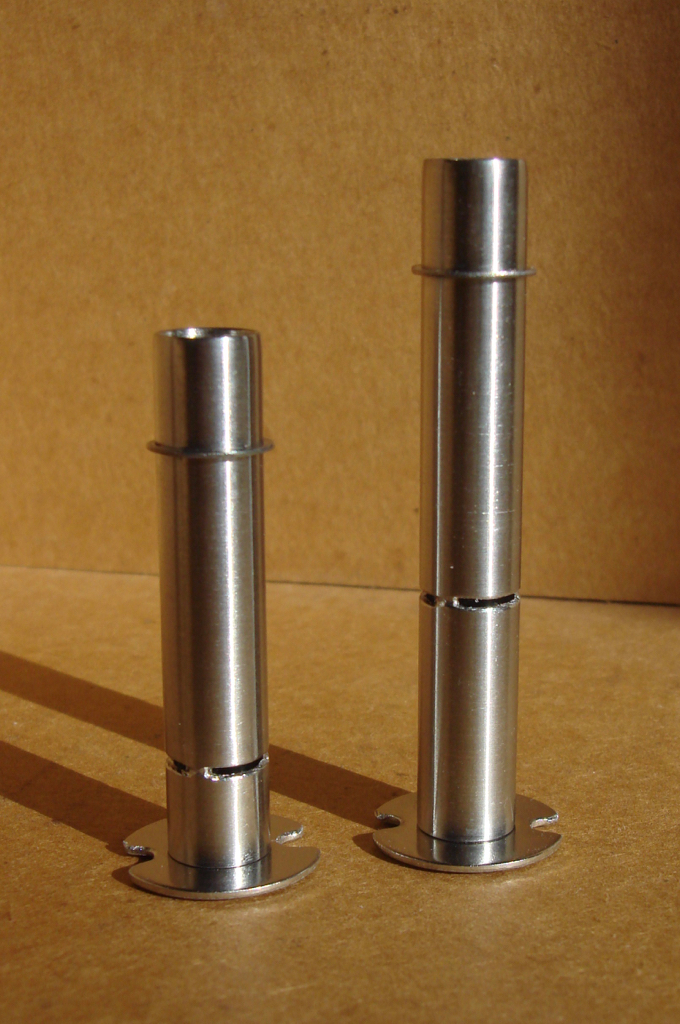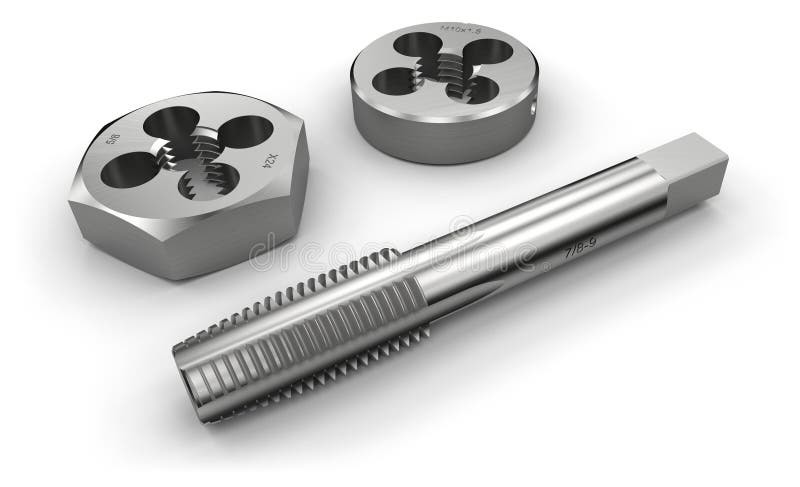Branching off from
@Abysmal Vapor s
510 Halo-mesh thread in the DIY forum here, where we discussed similarities shared by both our ‘portable’ projects, I made a small portable log vape, as a side project to my desktop logs, that can be used with your typical 510 box mod on the go (box mod must be able to cope with a max load resistance of at least 4 ohm, better 5 ohm and is preferably to be used in VV/VW/power mode, for the time being -myself using an older iStick100 for this-) and which can also be set/screwed onto a small fitting base with a 510 female connector, which then connects to a 5,5/2,1 mm DC jack and thereby to a 5V/2A DC power supply for use at home as a desktop unit.
The overall idea and also the initial body design for this little portable ‘twiggy’ is obviously inspired by
@Alan s iHeat (wooden 510 portable/desktop hybrid) project and
@RastaBuddhaTao s Splinter (wooden 510 portable) plus some other 510 solutions, but still lacks that awesome degree of elaboration and perfection these two log/vape makers invested into both their professional 510 portable projects, and so my own 510 portable solution follows a more simple concept, of just setting a smaller sized traditional log onto a 510 box mod and giving it a cartridge heater that is on the one hand powerful enough, to keep initial heat up time well within a minute (so, no real ‘instant portable' here, like the two vapes mentioned above, which are using mesh heaters there), when driven by the 9-10V max and an corresponding output of about ~25W-30W, your typical box mod can provide for a load with a relatively high resistance (for a mod) of about 3,66 ohm, but on the other hand can also be run in kind of a ‘low wattage’ mode, just putting out the accustomed ~7W, the typical classic log vape design needs for producing satisfying clouds, when rum from a DC power supply and used as a desktop unit. The, for most other purposes much too powerful, 12V/40W/3,66 ohm Reprap cartridge heater happily complied to both needs

I just give a rundown of materials and specs used here, as you can find all the details and background info over at AbVap's
510 Halo-mesh thread already (and also my first ‘proof of concept’ prototype), whose own portable 510 project follows along similar lines of thought, but using a halogen mesh heater instead.
So this is a relatively simple device, much like your traditional log vape: The cartridge heater gets set into a Velocity type 510 base (easier to handle for my big fingers, than the smaller Kanger RDA base from the first prototype, you still see on some pics here), onto which a ss 9 mm heater cover gets fixed then. Base with heater and the stainless tube goes into a 3 cm diameter bamboo sleeve for a body then (mine is about 7 cm long now, with the base protruding another 5 mm at the bottom) and is fastened by a narrow high temp silicone ring into the bottom of the bamboo sleeve, into the top end of which, an 18,8 mm female tapered glass joint has been set with two high temp o-rings (a cut up 14/18 mm f/m glass adapter. Wanted to go for an all glass airpath before and then use with a 18 mm male joint stem, just like with the Splinter, but the 6 mm diameter cartridge is simply not made for heating the larger air volume, that can pass through an 18 mm GonG adapter and female tapered joint. So I set in the good old 9 mm stainless heater cover/tube again but left the glass, as it gives the whole affair a bit more stabilty, mass and weight and also protects the thin bamboo sleeve from getting to hot, when fired with 25W, running on the box mod.
The base for use as a desktop vape needs still to be build, but as this will be just another shorter piece of bamboo, some cork to set the 510 female connector with soldering ready leads/wings into, bit of wire and a DC jack, that will go fast, once the 510 connector arrives

The 9 mm (~3/8”) stainless heater cover/tube of the ‘MistyToGo’ (Thx to
@Megaton for the name ) will accept my standard 8.0 mm or 5/16" ss tips, set into a stem or water adapter, and an 11 mm outer diameter bushing I added around the 9 mm heater tube's top end, allows it accepting the standard Arizer Solo/Air glass stems/GonGs with the glass screen too, the short Arizer Air glass stem making for a conveniently short mouthpiece here. Stainless tips slide in. Glass tips slide over. Just as with me logs

Usage: Think of it as kind of a 'quasi instant, session hybrid’. Set unto a mod, for initial het-up, you’ll need to fire the mod at full voltage/wattage for about a minute or 5-6 ten sec cycles (ten sec safety cut off there), to reach the 210-230°C needed. Then insert your stem/mouthpiece with the load.. and vape away

Once this little loggie is up to temps, you just need pressing the firing button for some secs at a time to get it up to temps again when need be and you feel/see a noticeable drop in temps while using. You’ll get the hang of it pretty fast, as it comes naturally. Much like lighting up a conventional pipe, actually, where you apply the lighter repeatedly to the bowl while drawing, till its finally going all by itself. For a second session back to back (I kill a stem within a minute, just like with a log), heat-up will require even less cycles (depending on how long you wait before starting the second sesh, naturally) and then you're already up to temps again and can vape along. Once it cools down completely, you’ll need the whole 5-6 cycles (about a minute, all in all) for heat up again.
Will give some updates in this thread on the development of this portable 510 side project as it evolves now and then, but for now at least, it doesn't require its own thread. Also planning for a version with a DIY 510 mesh heater (naturally, given the inspiration

), once I figured the ins and outs of such a heater, to build one myself.
Some impressions of the ‘MistyToGo’ 
(Pics of the heater arrangement itself will be edited in later tonight, as I have to disassemble one of the prototypes for that first. Forgot to take pics before assembling

)
Edit 1: Heater cartridge in Kanger base and RDA (as used in the first prototype), done the same way in the second prototype here, but using a velocity type base instead. Heater enclosed by the ss 9 mm heater cover. MistyToGo with a 14 mm NonG and a wooden stem (both with ss tips), and the cut off GonG adapter I used for its 18 mm female joint.
Edit 2: On another note, I recycled my very first DIY pine wood body again (the one with the chanel in it, that I tried to do an all glass airpath log from later on, one or two pages back, but that never worked out very well, due to needing a heater with a wider surface area, or maybe a series of cartridge or resistor heater pairs, set up both in series and parallel, as
@RastaVapa suggested) and continued my experiments with closed, high mass cores:





 . I guess you would enjoy to dive into it,if you havent already
. I guess you would enjoy to dive into it,if you havent already  )
) 





















 As the tips go into the hc a good deal and there still needs to be an internal air gap to the heater, the heater sits pretty deep inside the cover as is and space below the heater is reduced to maybe 1,0 cm max only and then there is another 0,5 mm, already taken up by the teflon washer, which holds the hc in place. Could place maybe two washers there.
As the tips go into the hc a good deal and there still needs to be an internal air gap to the heater, the heater sits pretty deep inside the cover as is and space below the heater is reduced to maybe 1,0 cm max only and then there is another 0,5 mm, already taken up by the teflon washer, which holds the hc in place. Could place maybe two washers there. 





